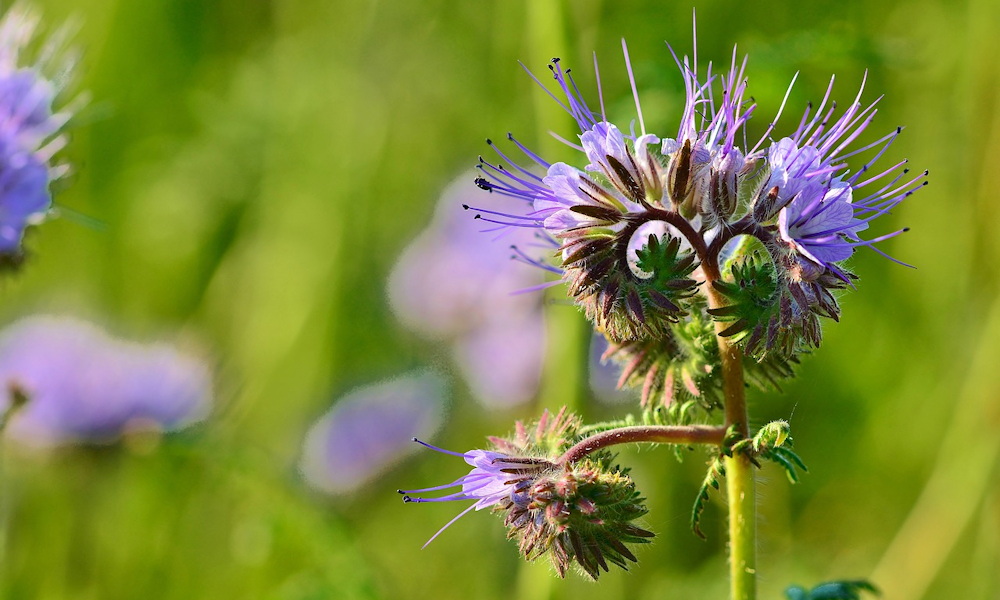Lacy phacelia (Phacelia tanacetifolia), also known as blue tansy or purple tansy, is a captivating addition to any garden. This annual herbaceous plant is celebrated not just for its stunning visual appeal, but also for its multitude of benefits to gardeners and farmers alike. Let’s delve into the unique characteristics, blooming patterns and myriad advantages of planting lacy phacelia, while uncovering some fascinating facts about this remarkable plant.
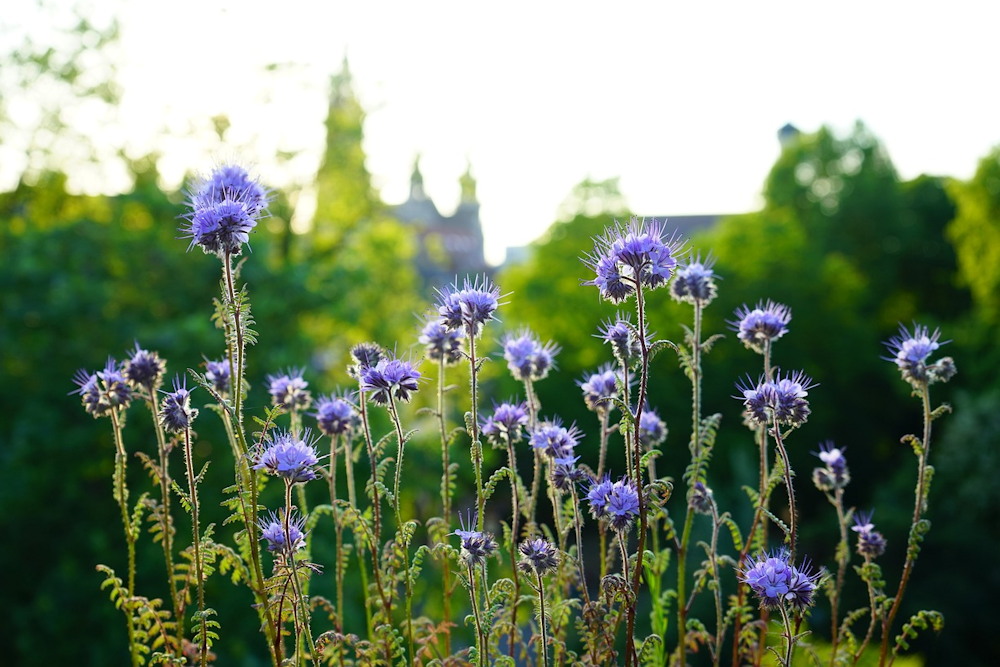
The Enchanting Elegance of Lacy Phacelia
Lacy phacelia boasts delicate, fern-like foliage with finely divided, lace-like leaves, which give the plant its “lacy” moniker. Its most striking feature, however, is its beautiful inflorescence. The plant produces curled clusters of bell-shaped flowers in a vibrant purple-blue hue, each with long, protruding stamens that add an ethereal touch. The blooms form in a coiled cyme, unfurling gradually to reveal a succession of blossoms over an extended period. This makes lacy phacelia a continuous source of visual delight in any garden setting.
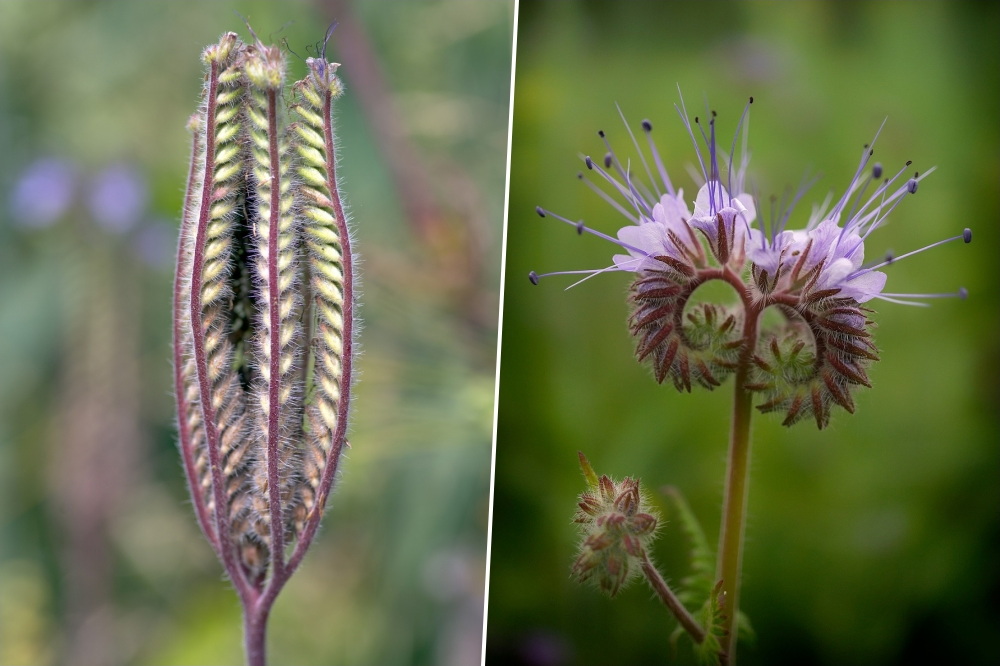
A Symphony of Blooms
Lacy phacelia typically blooms from late spring to early summer, although in milder climates, it can continue flowering well into the fall. The blooming period lasts several weeks, providing a long-lasting spectacle of color and charm. This extended blooming season is particularly beneficial for pollinators, ensuring a steady supply of nectar and pollen during a critical period.
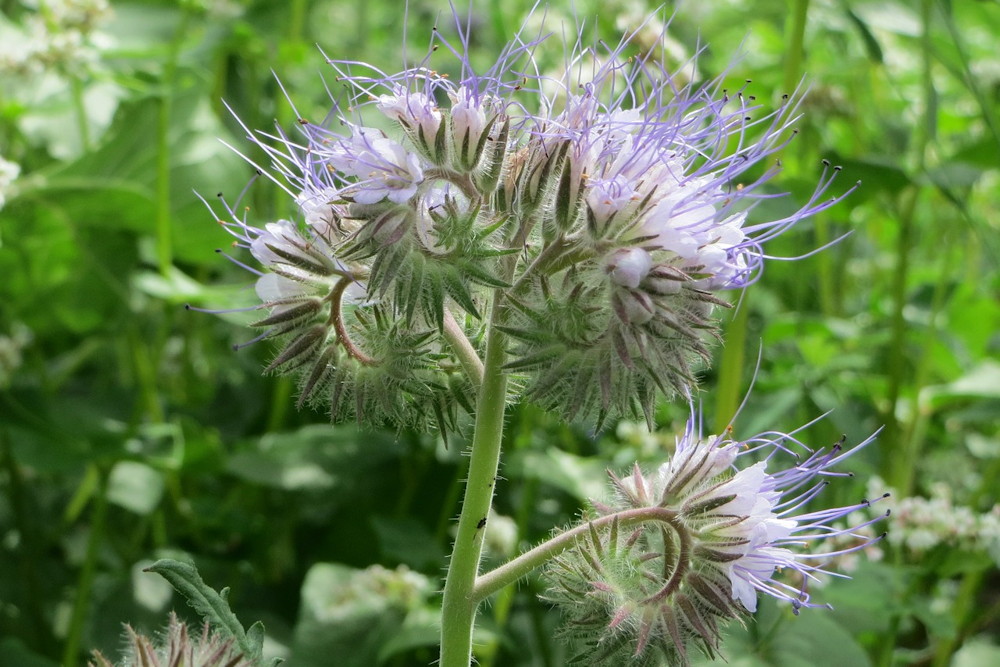
Why Lacy Phacelia is Your Garden’s Best Friend
- Pollinator Magnet: Lacy phacelia is a top choice for attracting bees, butterflies and other beneficial insects. Its abundant nectar and pollen make it a favorite among pollinators, promoting biodiversity and aiding in the pollination of other garden plants.
- Soil Health Improver: As a green manure crop, lacy phacelia is unparalleled. It helps to improve soil structure, prevent erosion and increase organic matter when tilled back into the soil. The deep roots also help in breaking up compacted soil.
- Weed Suppression: Lacy phacelia grows quickly, forming a dense canopy that effectively suppresses weed growth. This natural weed control method reduces the need for chemical herbicides, making it an excellent choice for organic gardening.
- Pest Patrol: This plant attracts a variety of beneficial insects, such as ladybugs and hoverflies, which prey on common garden pests like aphids and mites. This natural pest control helps maintain a healthy garden ecosystem.
- Aesthetic Appeal: With its stunning blue-purple flowers and intricate foliage, lacy phacelia adds a touch of elegance and charm to any garden. It’s particularly effective when used in borders, wildflower meadows or as a companion plant in vegetable gardens.
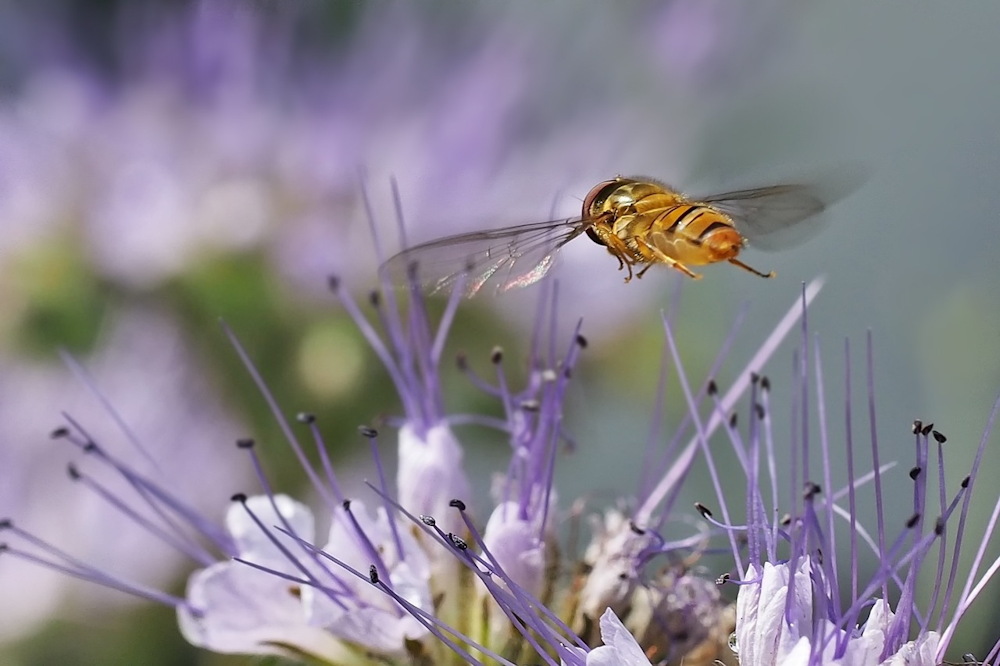
Fields of Dream: The Agricultural Role of Lacy Phacelia
Large-scale planting of lacy phacelia is common in agricultural settings for several compelling reasons. Farmers utilize this plant primarily for its benefits to soil health and crop productivity. As a cover crop, it improves soil fertility and structure, reduces erosion and enhances water retention. Additionally, fields of lacy phacelia provide a crucial habitat for pollinators, which in turn boost crop yields through improved pollination. This makes it an invaluable asset in sustainable farming practices.
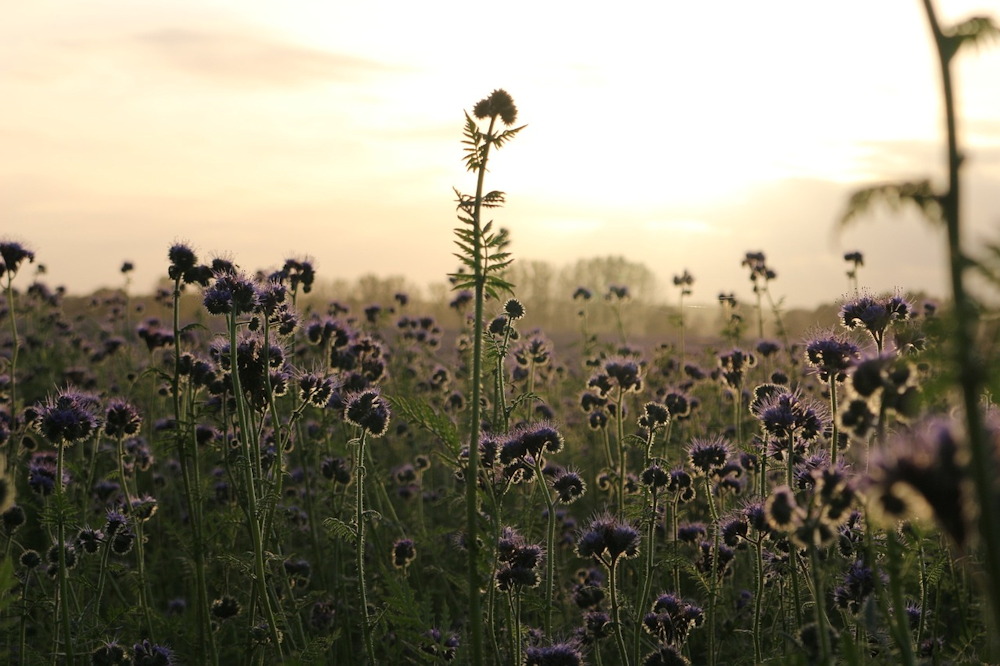
The Many Talents of Lacy Phacelia
- Ecological Balance: Lacy phacelia supports a wide range of beneficial insects, contributing to a balanced ecosystem. This biodiversity helps in natural pest control and promotes healthy plant growth.
- Soil Enrichment: The plant’s ability to enhance soil structure and fertility makes it a key player in sustainable agriculture. Its use as green manure adds vital nutrients back into the soil, fostering better crop production.
- Water Management: The deep-root system of lacy phacelia aids in water infiltration and retention, making it beneficial in managing soil moisture levels. This is particularly valuable in areas prone to drought.
- Erosion Control: The dense growth habit of lacy phacelia helps to protect soil from erosion by wind and water. This is especially useful on slopes and other vulnerable areas.
- Biodiversity Support: By attracting a variety of pollinators and beneficial insects, lacy phacelia enhances the biodiversity of any agricultural or garden environment. This leads to healthier plants and more resilient ecosystems.
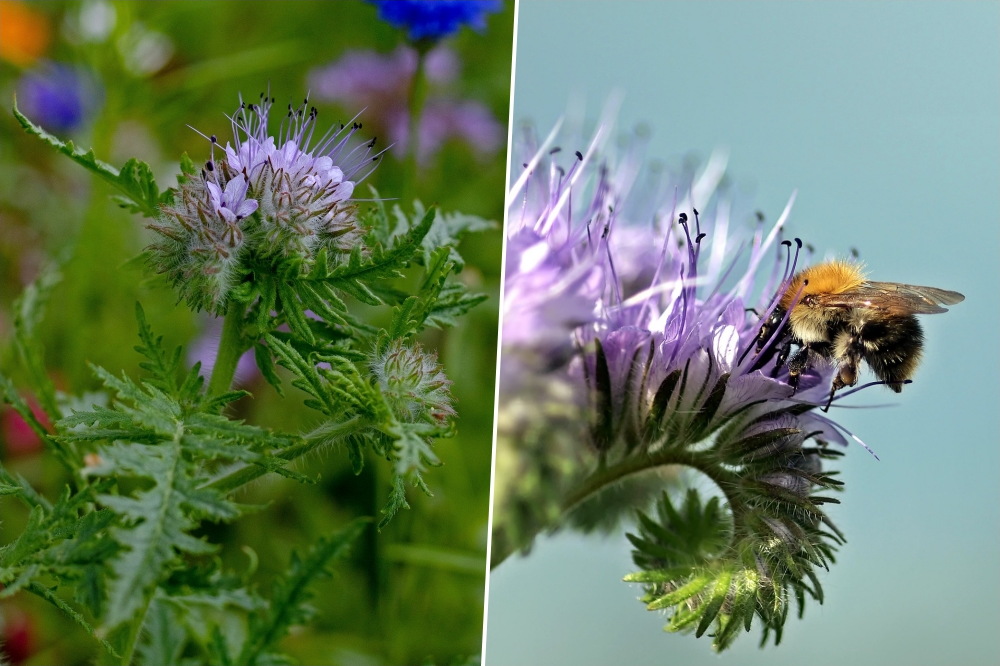
Five Fascinating Facts About Lacy Phacelia
- Historical Use: Lacy phacelia has been used in Europe since the 19th century, primarily as a cover crop and green manure, long before its benefits to pollinators were fully appreciated.
- Nectar Production: This plant is known for its exceptional nectar production, capable of producing more nectar than many other flowering plants, which is why it’s a favorite among beekeepers.
- Rapid Growth: Lacy phacelia can reach maturity in just 6 to 8 weeks, making it an excellent choice for quickly establishing cover crops between main crop rotations.
- Phytoremediation Potential: Studies suggest that lacy phacelia can help in the phytoremediation of contaminated soils, potentially absorbing heavy metals and other pollutants.
- Versatility: Beyond its agricultural and ecological benefits, lacy phacelia is also used in cosmetic and medicinal products due to its soothing properties and pleasant fragrance.
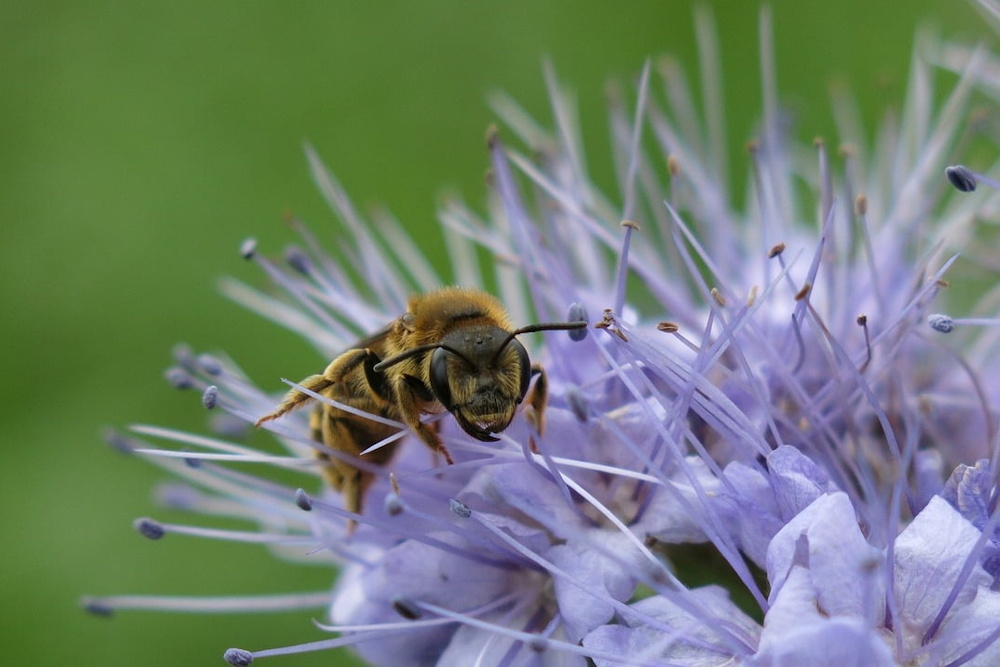
Incorporating lacy phacelia into your garden or farm is not just a nod to its beauty but a step towards more sustainable and environmentally-friendly practices. Whether you’re a seasoned gardener or a novice, this plant promises to be a rewarding addition with its myriad benefits and charming presence.




